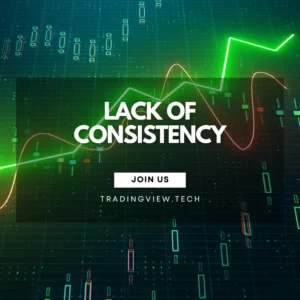Trading in financial markets offers both significant opportunities and substantial risks. Many investors are drawn to trading for its potential to generate wealth, diversify income, and achieve financial independence. However, along with the rewards come challenges, including market volatility, financial losses, and emotional stress. Understanding these aspects is crucial for anyone looking to engage in trading responsibly.
The key to success in trading lies in balancing risk and reward. While some traders thrive by making informed decisions, others struggle due to a lack of strategy or knowledge. Without a solid risk management plan, even experienced traders can suffer significant financial setbacks. In this article, we will explore the benefits and risks of trading and outline practical strategies to minimize financial dangers while maximizing potential profits.
The Benefits of Trading: Opportunities for Growth
Trading provides individuals with several financial advantages, making it an attractive option for those looking to grow their wealth. One of the most significant benefits is the potential for high returns. Unlike traditional investments, such as savings accounts or bonds, trading allows for quicker gains through well-timed market moves. Skilled traders can take advantage of price fluctuations to generate profits in both rising and falling markets.
Another advantage of trading is its accessibility. With online platforms and brokerage accounts, anyone with an internet connection can participate in financial markets. This accessibility has democratized trading, enabling individuals to invest in stocks, commodities, cryptocurrencies, and forex markets from anywhere in the world. Additionally, trading offers flexibility in terms of time commitment. While some traders engage full-time, others participate part-time, making it a viable option alongside other sources of income.
Moreover, trading can serve as a valuable tool for portfolio diversification. By investing in different asset classes, traders can reduce overall risk and protect their investments against market downturns. Diversification helps to balance losses in one market with gains in another, creating a more stable financial strategy.
Beyond financial gains, trading fosters discipline, analytical thinking, and strategic decision-making. Successful traders develop strong problem-solving skills and learn to manage emotions such as fear and greed. These psychological benefits contribute not only to better trading performance but also to improved decision-making in other areas of life.
While trading presents many opportunities, it is essential to approach it with the right knowledge and risk management strategies. In the next section, we will discuss the potential dangers traders face and how these risks can impact financial stability.
The Risks of Trading: What Can Go Wrong?
While trading offers numerous financial opportunities, it also comes with significant risks that can lead to substantial losses if not managed properly. One of the most critical risks is market volatility. Prices of stocks, currencies, and commodities can fluctuate unpredictably due to economic events, political instability, or sudden market sentiment changes. Even the most experienced traders can struggle to predict these shifts accurately, leading to unexpected financial setbacks.
Another major risk is leverage, which allows traders to control large positions with relatively small investments. While leverage can amplify profits, it can also magnify losses. A small market movement in the wrong direction can wipe out an entire trading account if proper risk management is not in place. Many traders fall into the trap of overleveraging, which increases exposure to market fluctuations and heightens the risk of significant losses.
Emotional trading is another common pitfall. Fear, greed, and impatience often lead traders to make impulsive decisions rather than sticking to a well-thought-out strategy. For instance, panic-selling during a market downturn or chasing after quick profits without proper analysis can result in financial losses. Successful trading requires discipline and emotional control, which many beginners struggle to develop.
Additionally, a lack of knowledge and poor risk management can be disastrous. Many new traders enter the market without sufficient research or an understanding of market trends, technical analysis, or economic indicators. Without proper preparation, they are more likely to make costly mistakes. Risk management tools such as stop-loss orders and position sizing are essential to minimizing potential damage, yet many traders neglect to use them effectively.
Fraud and technical risks also pose a threat. Unregulated brokers, phishing scams, and system failures can result in the loss of funds. Choosing a reputable trading platform and securing online accounts with strong passwords and two-factor authentication are crucial steps in mitigating these risks.
Despite these dangers, trading can be a profitable endeavor when approached with caution. The key to long-term success lies in effective risk management strategies, which we will explore in the next section.
Effective Risk Management Strategies for Traders
To navigate the challenges of trading, it is essential to implement sound risk management techniques. The first and most important rule is to never risk more than you can afford to lose. Setting clear investment limits and only using disposable income for trading can help protect long-term financial stability.
One of the most effective risk management tools is the stop-loss order, which automatically closes a trade when an asset reaches a predetermined price. This prevents traders from suffering excessive losses due to sudden market downturns. Similarly, a take-profit order ensures that profits are locked in before the market reverses. By setting these limits, traders can maintain control over their investments and avoid emotional decision-making.
Diversification is another crucial strategy. Instead of concentrating all funds in a single asset, traders should spread their investments across different markets. A well-diversified portfolio reduces exposure to individual market fluctuations and helps balance potential losses with gains from other assets.
Position sizing is also essential for minimizing risk. Instead of investing a large portion of capital into one trade, traders should allocate only a small percentage of their total funds per trade. This strategy ensures that even if a trade goes wrong, the overall account remains protected.
Additionally, continuous education is vital for staying ahead in the trading world. Markets evolve, and successful traders adapt by learning new strategies, studying economic trends, and staying informed about global financial news. Engaging in paper trading (simulated trading) before risking real money can help beginners develop skills and confidence without financial consequences.
Lastly, maintaining emotional discipline is key. Setting a well-defined trading plan and sticking to it, regardless of short-term market movements, can prevent costly mistakes. Practicing patience and avoiding impulsive decisions ensures that traders stay focused on long-term profitability rather than chasing immediate gains.
By applying these risk management strategies, traders can enhance their chances of success while minimizing potential financial losses. Trading is not just about making money—it’s about protecting it, too.



